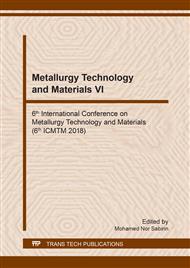p.44
p.49
p.55
p.60
p.67
p.72
p.77
p.85
p.92
Influences of Spindle Speed and Feed Rate on Exit Burr Height and Workpiece Diameter in Drilling Forging Brass
Abstract:
Exit burrs are formed on the end of hole and have some undesirable characters leading to assembly quality problem. Deburring is one of the practical procedures used to solve this problem. Nevertheless, this step is a time consuming and causes high operation cost. This work studied the experimental investigations in drilling forging brass using a special tungsten carbide drilling tools. The exit burr height and workpiece diameter were measured at various spindle speeds and feed rates based on 2k plus center point experimental design and investigated by analysis of variance (ANOVA). The results of ANOVA indicated that spindle speed and feed rate on exit burr height and workpiece diameter were statistically significant at the level of significance of 0.05.
Info:
Periodical:
Pages:
67-71
Citation:
Online since:
August 2018
Authors:
Keywords:
Price:
Сopyright:
© 2018 Trans Tech Publications Ltd. All Rights Reserved
Share:
Citation:


